Estimated reading time: 14 minutes
The idea of building your rifle used to seem like an impossibility. However, that has changed with the advent of stripped lowers, complete uppers for sale, and the growing hobby-scape AR building. California has even seen this boon for its gun community – even in its legal landscape.
Building an AR is a great way to learn more about the platform, and move from a casual enthusiast to a more informed and invested member of the gun community. It also can be a more economical way to get an AR in California.
Table of contents
- Building an AR in California: Lower Receiver
- Stripped Lower Options
- Legal Hoops To Jump Through
- 80% Lowers…
- California Bills
- Registering A Lower
- Fixed Magazine Options:
- “Featureless” Compliance When Building An AR
- Grips For Building An AR
- Your Stock
- Flash Hider to Muzzle Break
- Short Barrels on AR and AR Pistols…
- Building An AR Conclusion:
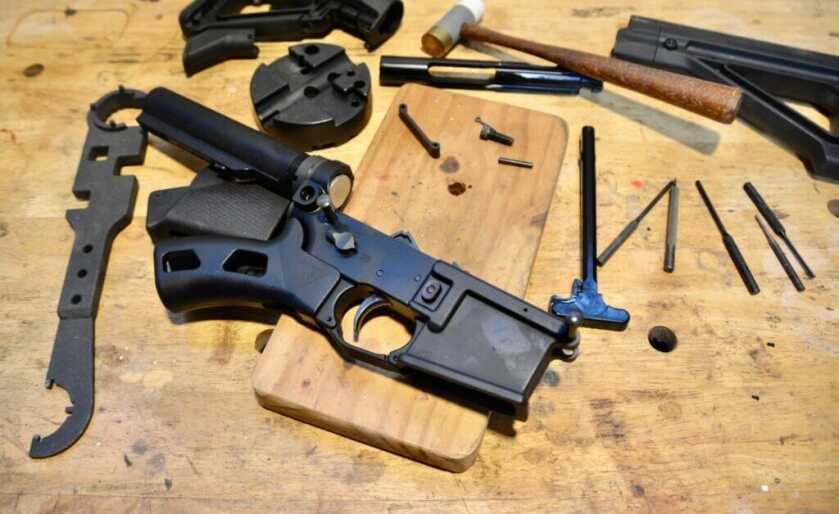
Building an AR in California: Lower Receiver
Buying a serialized AR lower in California is perfectly legal. It would be like buying any other firearm in the state. Go to an FFL, pick out the AR lower of your heart’s desire, and complete your paperwork. After your 10-day wait, as is normal for all firearms, you can pick up your lower and begin building it.
Two important things to know: this weapon will be registered to you, and when you build it out, it must comply with the law as discussed before. This means you will need to choose between the fixed magazine route or our featureless route. Also, AR pistols are in a somewhat grey area, so I would counsel against that. They are sold as single-shot weapons in the state, which you should be able to build.
Stripped Lower Options
A quick search showed that stripped lower can be found anywhere from $110 based on your wants. Buyers must go through a Federal Firearms Licensee, even if they ordered online. These will be purchased like any firearm with a background check, a 10-day wait, and registration. A complete parts kit for a rifle can be found for as low as $280 – $500 from makers such as Del-Ton, Palmetto State Armory, and Aero Precision to name a few. However, the buyer must purchase compliant parts to make it legal under California law. They can do this by making the weapon fire from a fixed magazine or by parts to make the weapon featureless.
You may think, well, I can buy my parts out of state and bring them in. Yes, you can do the upper parts. However, you cannot bring the serialized lower into the state without it being processed through a California FFL.
Legal Hoops To Jump Through
If you, as a California Resident, buy an assault weapon out of state (if you even can…) then you still must legally have it shipped into the state to an FFL. If you move into the state and have an AR-15, it must meet state law regarding assault weapons as described above and be registered with the state online through the CFARS system. It cannot come into the state as an Assault weapon. This will also include if you have one of the named “assault weapons” from the original 1989 ban, it cannot come in…period. I know it does not necessarily make sense, but this is the law.
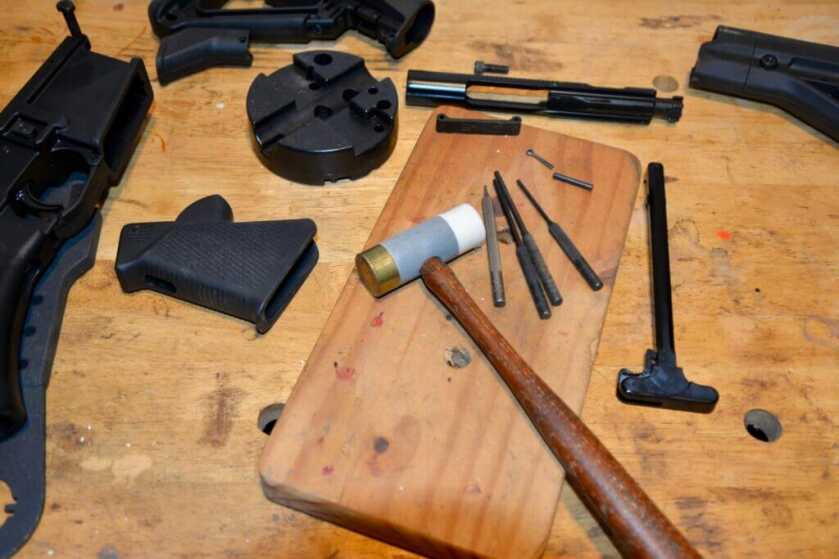
80% Lowers…
Some may want to build their own from an 80% lower with the thought it’s kind of an “off-grid” firearm. However, the days of buying an 80% lower without a background check and serial number in California are gone. Period. There was a period when the 80% pistol and rifle frames were prevalent. However, when they started showing up in more and more numbers at crime scenes, the state outlawed them. Per ATF they said 30% of crime scene guns recovered were unserialized lowers. LAPD saw an increase in 300% of these weapons at crime scenes from 2017 to 2021.
As of Jan 1, 2024, all firearms precursor parts (CA DOJ’s name for an unfinished receiver) must be bought through an FFL. Then, you must apply to the CA DOJ for a serial number through their online system (called CFARS), where they will approve the creation of the serial number/firearm. Starting on July 1, 2025, the FFL must complete a background check and forward the information of the sale like any other firearms sale.
You will then be required to engrave the serial number assigned by the state on the receiver along with the caliber, model, and name because you’re the manufacturer. The serial number will be registered to you, and this will also entail a background check through the DOJ. One important note, the 80% lower must get this serial number engraved before you begin any work on it.
California Bills
I reached out to the CA DOJ to get their opinion on 80% lowers directly from them. They directed me to California Penal Code sections 16531, 23920, and 30400, as well as California Assembly Bill AB1621. This defined 80% lowers, or “firearms precursor parts” as “any forging, casting, printing, extrusion, machined body or similar article that … may readily be completed, assembled or converted to be used as the frame or receiver of a functional firearm…”. Possession of an unserialized firearm is now a misdemeanor (23920(b) PC). The link to apply for a unique serial number is still in the California DOJ website, so this option still exists.
Many people bought 80% lowers in their heyday and built rifles and AR pistols with them. The ban on 80% or unserialized lowers was retroactive, so anyone owning one had to have a serial number permanently engraved and then register it by January 1, 2024, with photos of the gun sent to the California DOJ. Any unserialized lower now in the state of California that is part of a firearm makes possession of that gun a crime. If you still have one, I would strongly suggest conferring with legal counsel on how to legally dispose of it.
Registering A Lower
Those who tried to register them had many struggles or issues with the DOJ website portal (CFARS) to register them. Others built guns that did not comply with the law which they tried to register, which generally earned them a visit from the DOJ. To my knowledge, no one was arrested, but they forfeited possession of the items.
After researching this topic, it was very clear that there is still a lot of confusion. No companies sell the 80% lowers to California residents that I could find. I also could not find any stores that carried them. So while it may appear there is a pathway to purchase, serialize, register, and build out 80% lowers; in all practicality, it isn’t a viable option that I could find. After speaking with multiple gun shops, no one sold them or believed they were legal anymore. Moreover, with the prevalence of fully legal complete or stripped lowers it seems like 80% lowers have had their day, but that’s gone now.
Fixed Magazine Options:
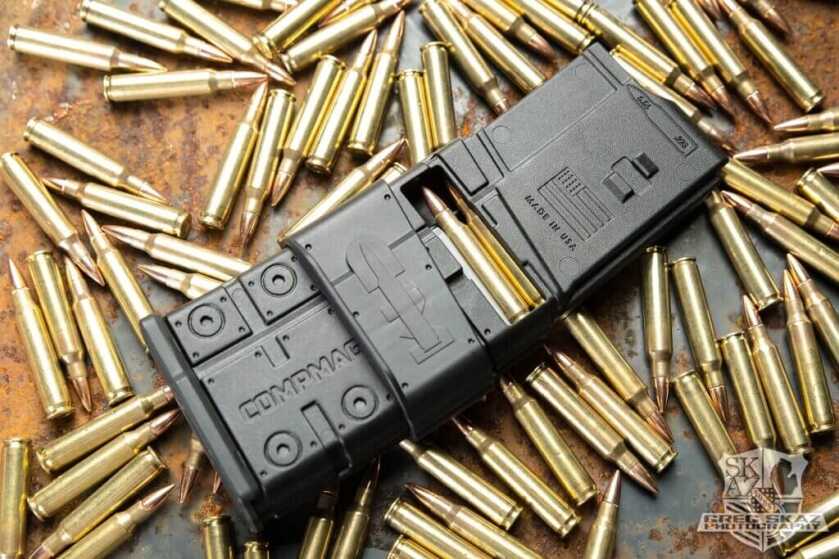
For the shooter that wants a rifle with all the standard features, then people should look to a fixed magazine setup where the receiver and frame must be opened/parted to reload or remove the magazine. This is done in one of two basic ways:
First, the rifle is built with a truly fixed magazine. In these, the weapon can be broken open, and rounds loaded one at a time into the top of the magazine from an open receiver. Or, in the case of the Compmag, the magazine stays put as does the receiver. A small window on the side of the magazine is opened to load the rounds one at a time into the magazine.
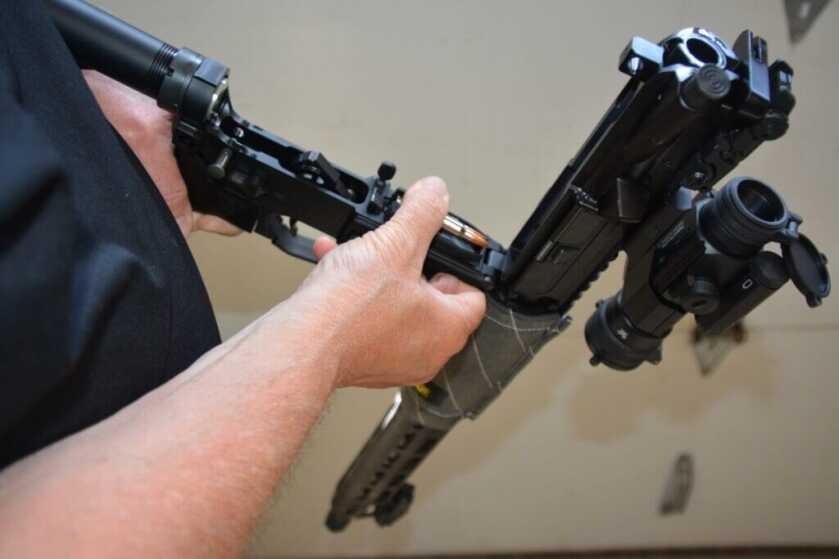
Second, the builder incorporates a system like the Juggernaut Tactical Hellfighter or the AR Maglock. These systems allow the operator to replace the rear locking pin so the weapon’s action is broken open to remove the magazine and reload. While this is happening, the gun cannot be fired. In essence, both systems allow the shooter to press the new receiver pin, which breaks the weapon ever so slightly. Once this happens, the magazine release can be used to eject the magazine. The shooter then reloads the weapon with a new magazine and closes the action where they can now fire. AR Maglock says their system makes AR’s compliant in California, New York, and Illinois.
“Featureless” Compliance When Building An AR
OK…so if you want to be featureless, you must build the rifle with none of the following features: a pistol grip that extends conspicuously below the action, a thumbhole stock, a folding or extending stock, a flare or grenade launcher, a muzzle flash hider, or a forward pistol grip. Most people don’t put a grenade/flare launcher, so you’re left working with the other issues, which come down to the stock/grip, flash hider, or a forward pistol grip.
Grips For Building An AR

First off, for pistol grips, this was initially a sticky, and vague point that was difficult to define, until case law later codified it in California’s Code of Regulations (CCR) and the Penal Code (PC 30515(a), CCR 11 §5469(d)). The law states the grip cannot allow for the web of the hand to go below the top of the exposed part of the trigger. This definition has created a lot of innovation that allows for a grip that resembles a traditional rifle grip…ish.
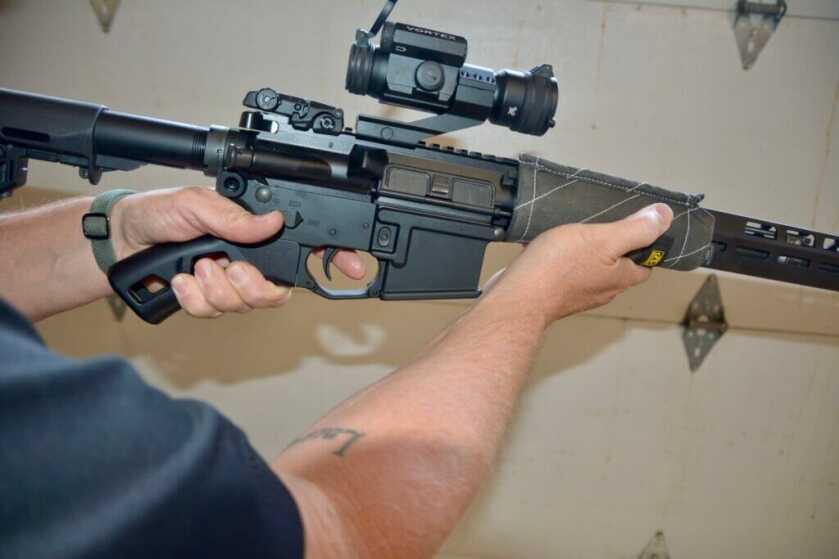
The free market has adapted. The first I saw was the Exile Machine Hammerhead Grip. They have since gone by the wayside. Now, companies like Resurgent Arms, Sparrow Dynamics, and Juggernaut Tactical have created handgrips. These are compliant with California Law and allow for a serviceable grip. Upon a trip to Turner’s Outdoorsman, I saw numerous guns outfitted with the Juggernaut tactical grip. These grips come back at an angle and keep the web of your hand above the exposed trigger as required.

Your Stock
Then came Thordsen’s FRS-15 stock. It replaces the stock and hand guard, creating an entire stock system that complies with California law. It may look a little different. Those who I’ve met at the range shooting them still swear by them.
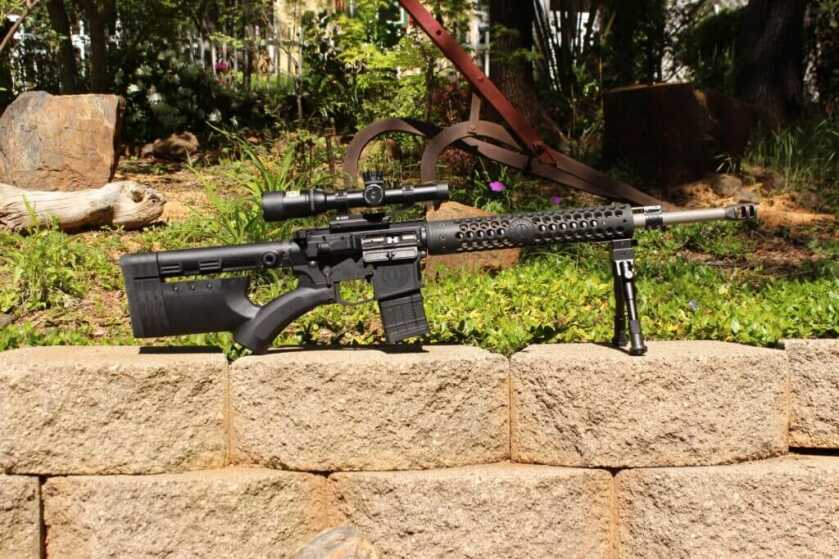
The other grip option this created was the “fin-grip” which does not allow the pistol grip to be held traditionally. Instead, the shooter must wrap their dominant hand around the front of the grip, including the thumb. As a lefty, for this is easier to access the safety, etc.
Next, the rifle stock must be fixed. This is a very easy solution. Most guns will either have their expandable stock permanently pinned. Others will elect to have a stock that is made as a fixed stock from the factory such as the CA version of the Sig M400 Tread. Strike Industries also sells a set of plugs that go into the locking holes of the buffer tube. These accomplish this without pinning the stock.
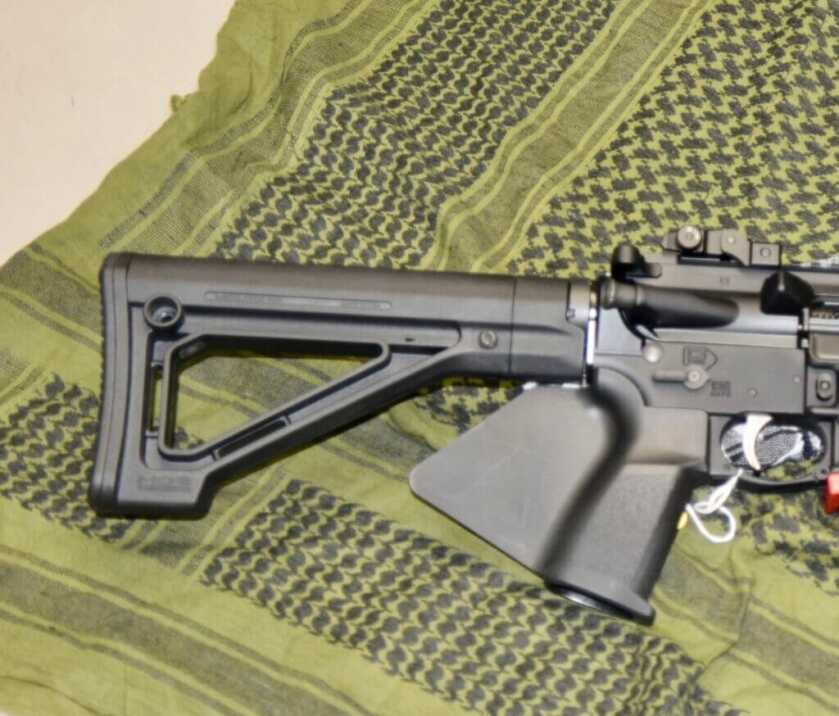
Flash Hider to Muzzle Break
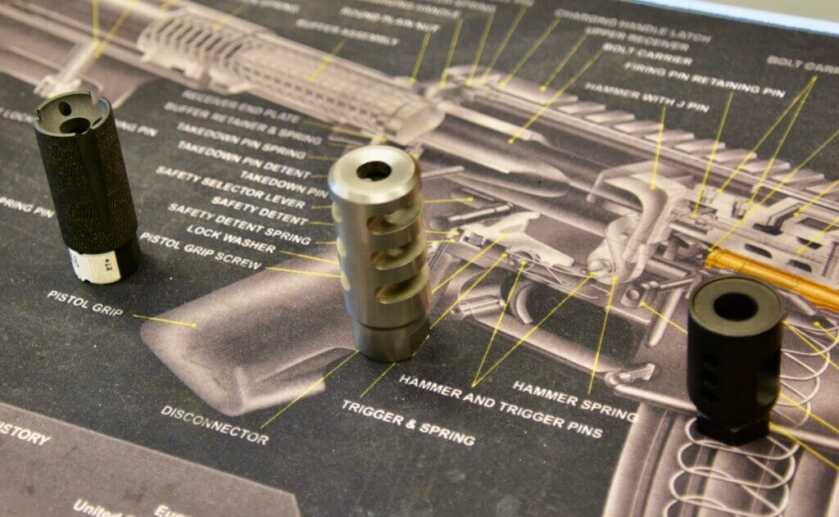
Flash hiders can be replaced with any of the muzzle brakes available today, or a simple thread protector. California defines a “flash hider” as “any device designed, intended, or that functions to perceptibly reduce or redirect muzzle flash from the shooter’s field of vision. (CCR 11 § 5469(b)). Muzzle breaks serve to redirect muzzle energy to reduce felt recoil. The flash hider is supposed to hide or reduce the muzzle flash of the weapon in firing by redirecting the blast energy from the round. Some of the common ones found are the old Vietnam-era bird cage or many of the 3-prong varieties. If you’re unclear, most manufacturers will designate it as such.
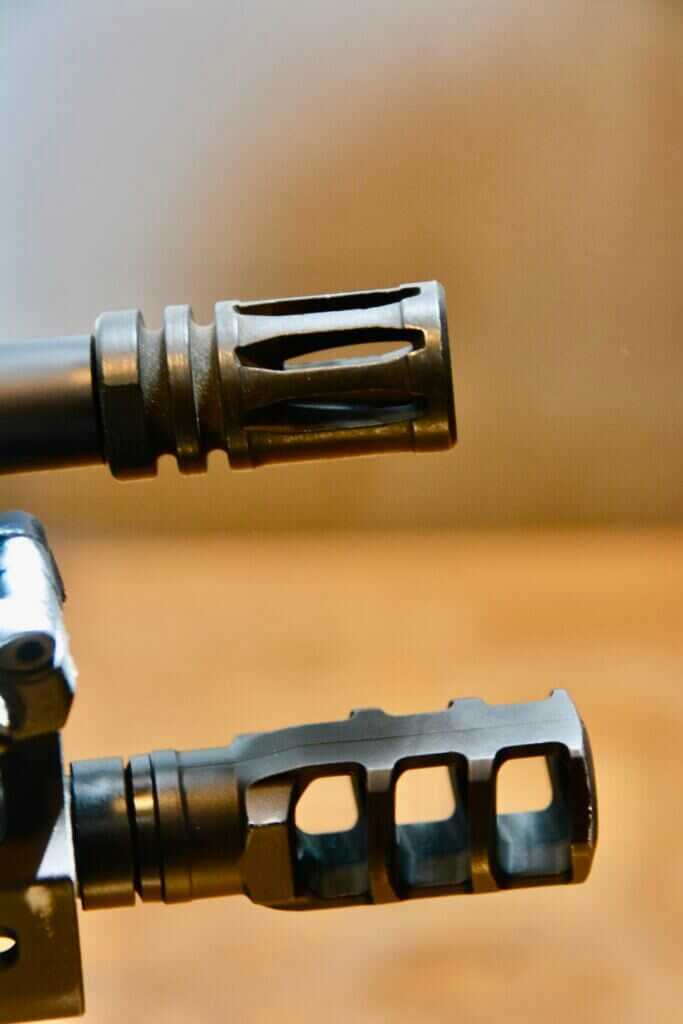
Short Barrels on AR and AR Pistols…
When building your ARs in California, remember that all rifles must have a barrel of no less than 16 inches and an overall length of no less than 26 inches. Possession of a short-barreled rifle in violation of either of these can be charged as a felony or a misdemeanor. Expect the arrest to be made as a felony, so off you go to jail.
Some try to get around this by looking to AR pistols. From the get-go, let me say they are also heavily regulated. There are legally sold single-shot, 10-shot fixed magazines, or bolt-action AR-pistols. Manufacturers like Juggernaut Tactical and Fulton Armory continue to bring these options. Some may want a properly licensed FFL to build an AR Pistol, but it must be built on a lower that was never used for or registered as a rifle. From the get-go, it must be set up to be a pistol. Second, it must have a fixed magazine that holds no more than 10 rounds. It also must not have any of the assault weapon features mentioned before.
Building An AR Conclusion:
Building ARs is a booming business, even in California. It’s an amazing way to learn the platform. There are many, many products out there. You can make everything from an economical modern sporting rifle to a top-tier rifle. It is incredibly important to keep up with the law here in the Golden State so yourself out of legal jeopardy.
READ PART 1: AR-15s For California Residents: Pt 1
Some may read this and find pause. You may want a long gun for defensive use, but not want to deal with the drama and ever-changing legal challenges for ARs or other so-called “assault rifles”. In my final installment, I’ll be looking at other options for long guns for California.
*** Buy and Sell on GunsAmerica! ***


When I resided in CA about 10 years ago we thought bullet buttons were oppressive. I didn’t realize how good I had it.
Now anywhere an un-serialized lower is found it’s automatically a crime scene!
Good luck Californians!
Commifornia….. what a disgrace. Reading this article and seeing the bullshit someone has to go through to get a rifle that meets liberal standards. Fixed magazine …… finned grip……. What a shithole ! Completely un-American.
Typ[cal california lefty state person saying go out of state to purchase assault rifle.Accordiong to him all out of state AR15s are assault weapons.
Why don’t they just go after an all out AR15 type rifle ban? That’s where the state is headed.
To ban wo/grandfathering existing registered as an assault weapon the state would find themselves in federal court because the state must compensate the owner at or above the fair market value. A pre Roberti-Roos FN-FAL & H&K 91 sell for thousands on Gunbroker. With the number or registered AW’s in CA the state would have to cut the budget for health & welfare or more likely raise sales taxes, highway fuel taxes & screw over the counties. It is likely that the cost would give the inmates in the insane asylum under the golden dome in Sacramento 2nd
& 3rd thoughts about the move. Besides when, not if, SCOTUS rules that Maryland’s AWB is unconstitutional the 1st, 2nd, 3rd, 7th & 9th Circuit courts will have to declare the AWB’s in CA, CT, DE, HI, IL, NJ, NY & WA moot. Hopefully the opinion will close out the arguments used by anti 2A judges to justify these AWB’s. I.E. State: that Heller clearly states that bearable arms that are in common use for lawful purposes can’t be banned; Bruen states the state has the burden to prove that the challenged regulation is constitutional by citing a minimum of 3 analogs from the founding era, 1792; Heller states that for the state to ban a bearable arm it must be Dangerous AND Unusual.
Note: The 2016 SCOTUS case Caetano v. MA states that arms where a minimum of 200,000 are kept by the people are not unusuale; therefore are in common use for lawbul purposes.